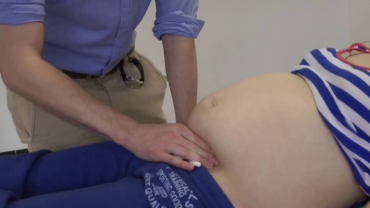From the day babies are born and start using their digestive systems to process food, gas is a part of life. For some babies, gas is a minor issue that causes little or no discomfort. For others, gas is a source of significant discomfort, causing parents to ask their pediatricians, “How can we help relieve our baby’s gas?”
First, it helps to understand what causes infant gas. Just like with adults, gas is caused by eating — except babies tend to eat much more often than adults. A newborn will eat every two hours, while an older baby might eat every three or four hours. That’s a lot of digesting, and it’s not uncommon to hear nearly-constant rumblings in your baby’s tummy. Naturally, all of that digestion produces gas.
Fortunately, there are few methods you can use to naturally relieve your infant’s gas. They include:
• Changing your feeding technique. Whether they’re breastfeeding or bottle fed, babies often swallow air while they are eating. Check your baby’s latch to make sure it’s secure. A narrow or unstable latch makes it easier to swallow air, which will result in more gas. Try switching positions for breastfeeding or a different nipple for bottle feeding.
• Burp early and often. For newborns, you might be burping every five minutes on the breast or after every half-ounce of consumed milk for bottle-fed babies.
• Pay attention to the time of day. If your baby is gassier during a particular time of day, try take a stroller walk around then. Sometimes the gentle rocking of a stroller can help move gas through the system.
• Use massage and bicycling. If your baby is showing symptoms of gas, you can gently massage his or her tummy or gently bicycle the legs to help move gas.
• Keep a food log. Breastfed babies can have trouble with some of the proteins in breastmilk, or they might react to compounds in certain gas-producing foods, like kale and cauliflower. Eat these in moderation if you see a link.
• Try a device to relieve gas. “The Windi” was designed to naturally relieve gas. The device is a single-use, hollow tube that was designed to gently and safely slip past the anal muscles and into the colon to let trapped gas escape through the tube. Its design has a stopper that prevents it from being inserted too far. It’s important to follow the directions on the product labeling exactly.
- 4188 views













